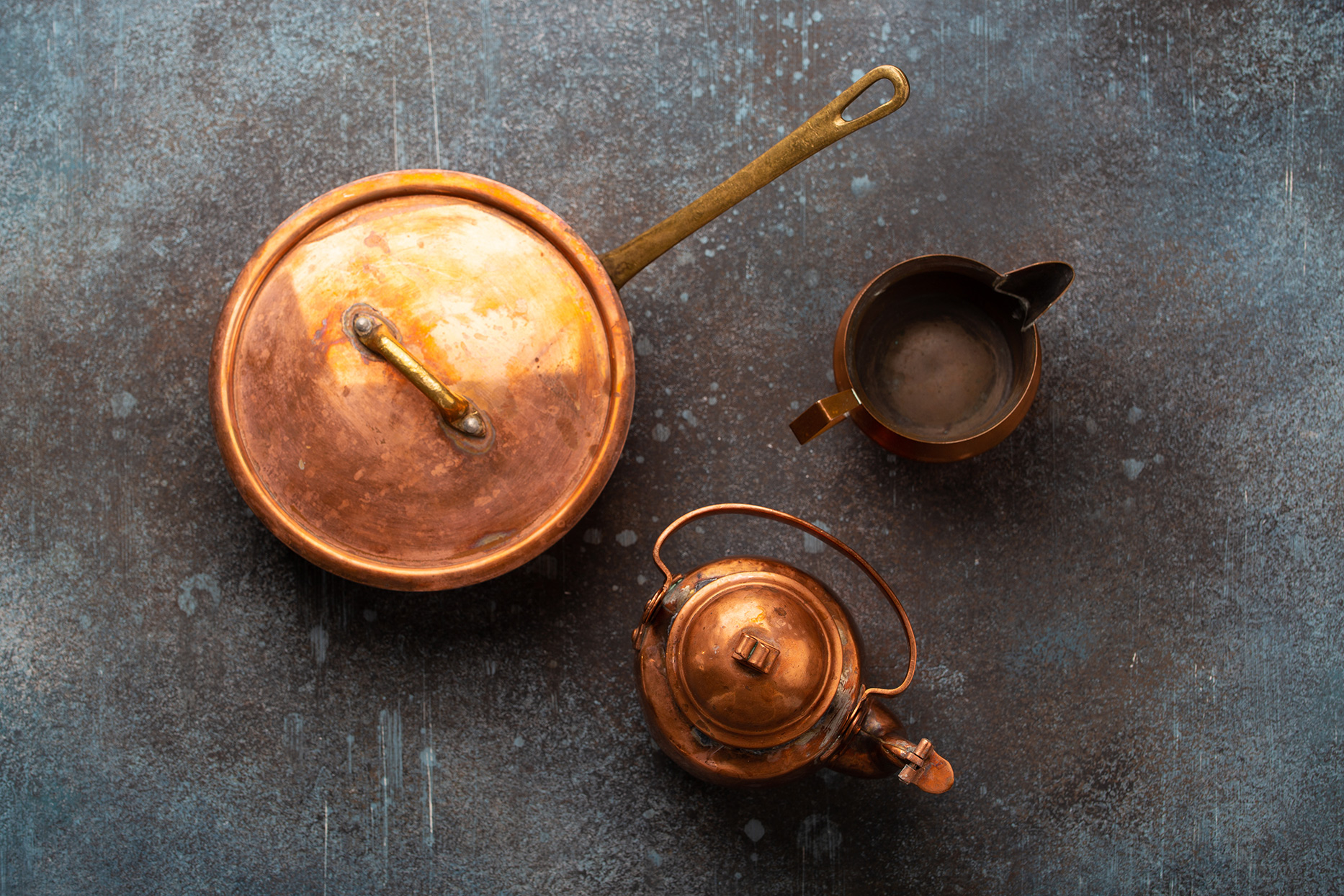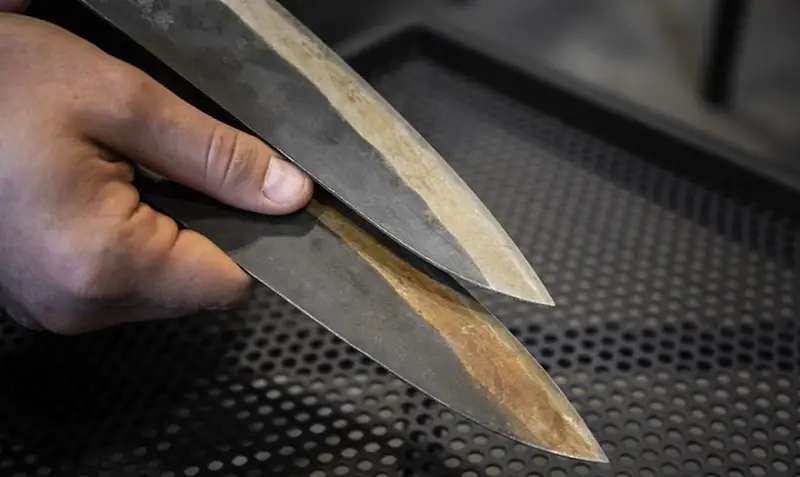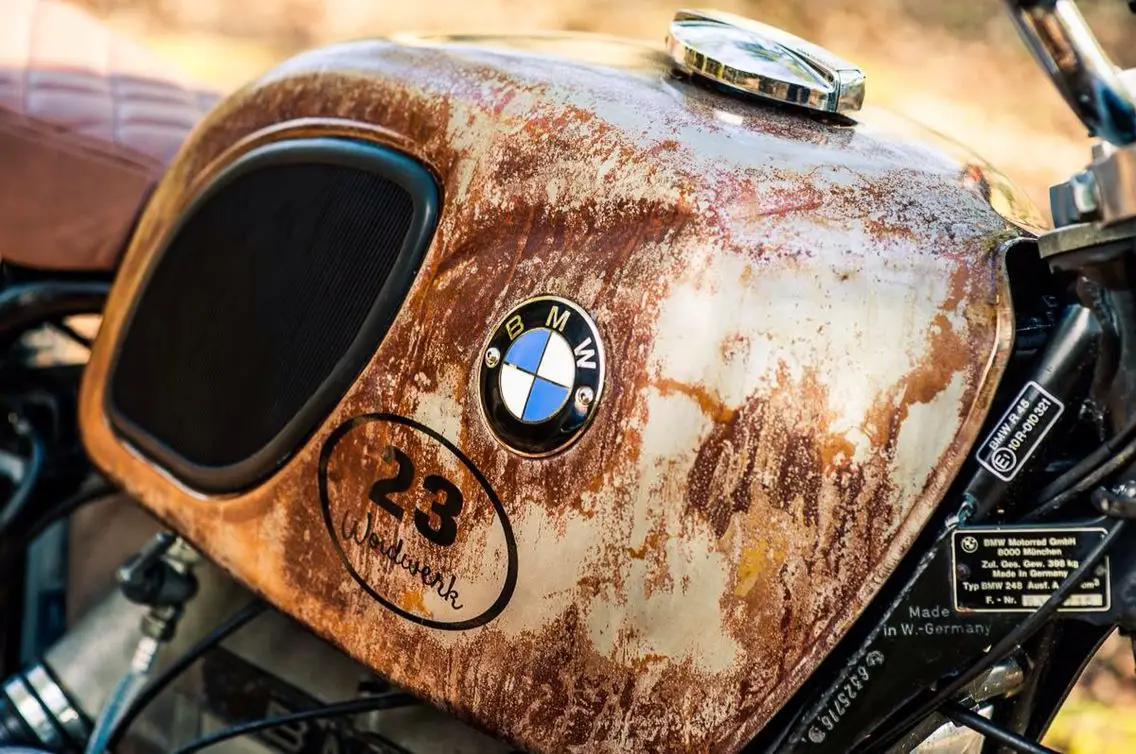Rust, tarnish, and patina are all terms used to describe the changes that can occur to metal surfaces over time. While these changes may seem similar on the surface, each term actually refers to a specific type of corrosion or oxidation that can affect metal objects. Understanding the differences between these three terms can help you appreciate the beauty and value of aged metal objects, or determine how to best care for your own metal possessions.
In this blog post, we will delve into the details of rust, tarnish, and patina, examining what causes each type of corrosion, the unique characteristics of each, and the ways in which these changes can impact the appearance and value of metal objects. Whether you are a collector of vintage metal objects, a metalworking enthusiast, or simply someone who wants to know more about the signs of aging in metal, this post will provide you with a wealth of information and insights. So, buckle up and get ready to learn all about the science behind rust, tarnish, and patina!
Rust Vs Tarnish Vs Patina
These are three common terms used to describe the changes that can occur to metal surfaces over time.
Rust, for example, is a type of corrosion that is often associated with iron or steel. It’s caused by the reaction of metal with oxygen and moisture in the air. The result is a reddish-brown coating that can be unsightly and can also weaken the metal. However, some people find the rough texture and unique color of rust to be appealing, especially in industrial and vintage-inspired design styles.
Tarnish, on the other hand, is a type of discoloration that can occur on certain metals like silver, copper, and brass. Tarnish is caused by a chemical reaction between the metal and atmospheric elements like sulfur and hydrogen. The result is a dull, grayish-brown coating that can dull the shine of the metal. Some people prefer the look of tarnished metal because it gives objects a warm, antique appearance.
Patina is a term that is often used to describe the rich, warm, and complex finish that can develop on copper and other metals over time. Unlike tarnish or rust, patina is not a result of corrosion or oxidation, but rather a buildup of natural oils, dirt, and atmospheric elements that can enhance the beauty of the metal over time. Patina is highly prized by collectors and artisans, who appreciate the unique character and history that it imparts to metal objects.

Guide on Methods to Solve Rust, Tarnish and Patina
Rust
Rust is a type of corrosion that occurs when iron or steel is exposed to moisture and oxygen, causing the metal to deteriorate and become covered in a red-brown powder. If not removed, rust can spread and eventually cause the metal to break down completely. There are several methods for removing rust, including:
- Sandpaper and Wire Brushes: Sandpaper and wire brushes can be used to physically remove rust from metal surfaces. This method is best for small areas of rust and is most effective when used in conjunction with a rust dissolver or rust inhibitor.
- Chemicals: Chemicals such as rust dissolvers and rust inhibitors can be applied to the metal to dissolve rust and prevent it from spreading. These chemicals can be found at most hardware and home improvement stores.
- Electrolysis: Electrolysis is a method that uses an electrical current to remove rust from metal surfaces. This method is best for large areas of rust and is most effective when used in conjunction with a rust dissolver or rust inhibitor.
Tarnish
Tarnish is a type of discoloration that occurs when metal is exposed to air and light, causing a buildup of a thin layer of metal sulfides on the surface. Tarnish can be removed using a variety of methods, including:
- Metal Polishes: Metal polishes are specialized cleaning products that can be used to remove tarnish from metal surfaces. Metal polishes come in a variety of formulas, including liquids, creams, and pastes, and can be found at most hardware and home improvement stores.
- Baking Soda and Vinegar: Baking soda and vinegar can be mixed together to create a natural tarnish remover. This method is best for small areas of tarnish and is most effective when used in conjunction with a metal polish.
Patina
Patina is a natural aging process that occurs when metal is exposed to the elements over time. It is characterized by a green or brown layer of corrosion that gives the metal a unique, weathered appearance. Patina can be preserved or enhanced using a variety of methods, including:
- Waxes and Oils: Waxes and oils can be applied to metal surfaces to protect the patina and enhance its appearance. These products can be found at most hardware and home improvement stores.
- Acids: Acids can be used to create a specific patina on metal surfaces. This method is best for experienced metalworkers and should be approached with caution, as acids can be dangerous if not handled properly.
Comparison Table
| Problem | Method | Pros | Cons |
|---|---|---|---|
| Rust | Sandpaper and Wire Brushes | Effective for small areas | Labor-intensive |
| Chemicals | Easy to use | Can be harsh and damaging to the metal | |
| Electrolysis | Effective for large areas | Requires specialized equipment and knowledge | |
| Tarnish | Metal Polishes | Easy to use | Can be harsh and damaging to the metal |
| Baking Soda and Vinegar | Natural and affordable | Less effective than metal polishes | |
| Patina | Waxes and Oils | Protects and enhances the patina | May change the appearance of the metal |
Equipment for Solving Rust, Tarnish and Enhancing Patina
Equipment for Solving Rust:
| Equipment | Description |
|---|---|
| Sandblaster | A high-pressure stream of abrasive material that is used to remove rust from metal surfaces |
| Chemical Rust Dissolver | A specialized rust dissolving agent that is used to remove rust from metal surfaces |
| Electrolysis Tank | A tank used for immersing metal objects in a solution of water and electrolytes to dissolve rust |
| Protective Gear | Gloves, goggles, and other protective gear used to protect the person using the equipment from hazards |
Equipment for Solving Tarnish:
| Equipment | Description |
|---|---|
| Polishing Cloth | A soft cloth used to apply metal-specific polish to remove tarnish from metal surfaces |
| Tarnish Remover Solution | A specialized tarnish remover product that is used to remove tarnish from metal surfaces |
Equipment for Enhancing Patina:
| Equipment | Description |
|---|---|
| Chemical Patination Kit | A kit that includes chemicals and tools used to apply chemicals to metal objects to enhance the development of patina |
Note: In addition to the specific equipment listed above, a workspace with good ventilation and access to running water is also important for working with rust, tarnish, and patina. It is also important to follow proper safety procedures, including wearing protective gear and following the manufacturer’s instructions for each piece of equipment.

Step-by-Step Instructions for Removing Rust, Tarnish and Enhancing Patina
Instructions for Removing Rust
- Prepare the Workspace: Set up your workspace in a well-ventilated area and make sure you have access to running water. Put on gloves and goggles to protect yourself from hazardous chemicals.
- Choose the Right Equipment: Depending on the size and type of the metal object, you may choose to use a sandblaster, chemical rust dissolver, or electrolysis tank. Read the instructions carefully and make sure you have all the equipment you need.
- Clean the Surface: Before you begin, remove any dirt or debris from the surface of the metal object. This will help the rust dissolver to penetrate the rust and make it easier to remove.
- Apply the Rust Dissolver: Depending on the equipment you are using, you may need to fill an electrolysis tank with water and electrolytes, apply the chemical rust dissolver, or set up the sandblaster. Follow the instructions carefully to ensure you are using the equipment correctly.
- Let the Rust Dissolver Work: Leave the rust dissolver on the surface for the recommended time. This will allow it to penetrate the rust and dissolve it.
- Rinse and Dry: Once the rust dissolver has finished working, rinse the metal object thoroughly with water to remove any residue. Dry the object thoroughly with a clean cloth.
- Protect the Surface: After removing the rust, it is important to protect the metal surface from further rusting. You may choose to apply a rust inhibitor or a coat of paint or wax to protect the metal.
Instructions for Removing Tarnish
- Prepare the Workspace: Set up your workspace in a well-ventilated area and make sure you have access to running water. Put on gloves if necessary.
- Choose the Right Equipment: You may choose to use a polishing cloth or a tarnish remover solution. Read the instructions carefully and make sure you have all the equipment you need.
- Clean the Surface: Before you begin, remove any dirt or debris from the surface of the metal object.
- Apply the Tarnish Remover: Depending on the equipment you are using, you may need to apply the tarnish remover solution or rub the metal surface with the polishing cloth. Follow the instructions carefully to ensure you are using the equipment correctly.
- Let the Tarnish Remover Work: Leave the tarnish remover on the surface for the recommended time. This will allow it to penetrate the tarnish and dissolve it.
- Rinse and Dry: Once the tarnish remover has finished working, rinse the metal object thoroughly with water to remove any residue. Dry the object thoroughly with a clean cloth.
Instructions for Enhancing Patina
- Prepare the Workspace: Set up your workspace in a well-ventilated area and make sure you have access to running water. Put on gloves and goggles to protect yourself from hazardous chemicals.
- Choose the Right Equipment: You will need a chemical patination kit to enhance the patina on a metal object. Read the instructions carefully and make sure you have all the equipment you need.
- Clean the Surface: Before you begin, remove any dirt or debris from the surface of the metal object.
- Apply the Chemical Patination: Follow the instructions in the chemical patination kit carefully. This will typically involve mixing the chemicals and applying them to the metal surface.
- Let the Chemical Patination Work: Leave the chemical patination on the surface for the recommended time. This will allow it to penetrate the metal and enhance the
- Rinse and Dry: Once the chemical patination has finished working, rinse the metal object thoroughly with water to remove any residue. Dry the object thoroughly with a clean cloth.
- Seal the Surface: After enhancing the patina, it is important to protect it from further damage. You may choose to apply a sealant or a coat of wax to protect the metal and keep the patina looking its best.
- Enjoy Your Creation: After following these instructions, your metal object will have a beautiful and unique patina. You can now display it with pride or use it as you see fit.

FAQ
What is the difference between rust and tarnish?
Rust is a type of corrosion that occurs when iron or steel is exposed to moisture and oxygen, causing the metal to deteriorate and become covered in a red-brown powder. Tarnish, on the other hand, is a type of discoloration that occurs when metal is exposed to air and light, causing a buildup of a thin layer of metal sulfides on the surface.
What is patina?
Patina is a natural aging process that occurs when metal is exposed to the elements over time. It is characterized by a green or brown layer of corrosion that gives the metal a unique, weathered appearance.
Can rust and tarnish be removed?
Yes, rust and tarnish can be removed. There are a variety of methods and products available to remove rust and tarnish, including sandpaper, wire brushes, chemicals, and polishes.
Is patina a good thing or a bad thing?
Patina can be seen as both good and bad, depending on the context. In the world of antiques and collectibles, patina is often viewed as a sign of age and authenticity, adding value to the item. However, in other contexts, such as metal tools or machinery, patina can indicate wear and tear and the need for maintenance or repair.
Can patina be removed?
It is possible to remove patina, but doing so can damage the metal or remove its unique appearance. If you wish to remove patina, it is best to seek the advice of a professional or do extensive research before attempting to do so.



Leave a Reply